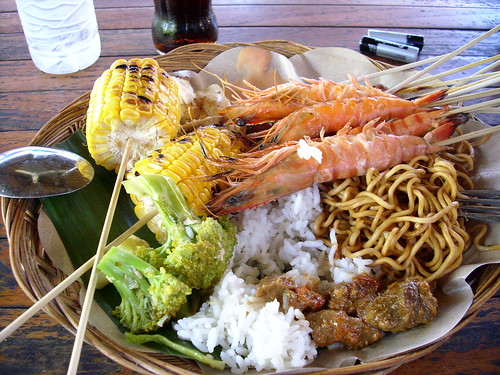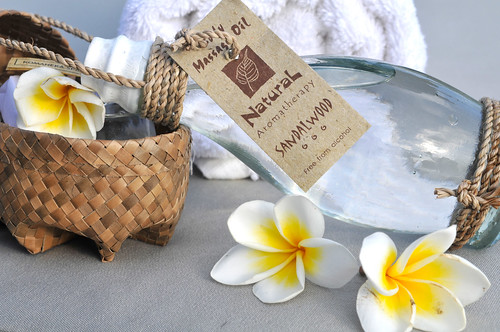5 Credit Card Tips for the World Traveler
 Thursday, September 30, 2010 at 3:07PM
Thursday, September 30, 2010 at 3:07PM Credit card acceptance continues to rise in almost every corner of the globe, but with many cards, that convenience can come at a cost. Here are five ways to be smarter about using your credit card overseas.
September 27, 2010
There's no question that cash is still king in many countries, but the widespread use of credit cards in more-developed nations has led to an increase in acceptance of Visa, MasterCard, and American Express cards everywhere from Tulum to Timbuktu.
Credit card fraud is an even bigger issue overseas than it is at home, however, and foreign transaction fees can easily add up. Here are five tips to keep in mind before your next trip across the pond.
1. Watch out for foreign transaction fees. Don't expect to swipe your card abroad without your card issuer taking a cut of your $50 olive wood wine bottle holder in Athens. Or that $25 Hard Rock Café shirt you couldn't leave behind in Sydney. Card issuers call these foreign transaction fees -- 1 percent for MasterCard and Visa, and a whopping 2.7 percent for American Express transactions abroad. Keep in mind that MasterCard and Visa fees may be even higher depending on your issuing bank, so be sure to call ahead to check on fees when you're taking care of tip number two.
2. Phone ahead. Don't board your flight without first calling your credit card issuer. Inform the customer service representative of your trip dates and the countries you plan to visit while abroad. Identity thieves can capture your credit card information in the U.S. and produce a duplicate card overseas, so banks have become increasingly vigilant when it comes to international transactions.
You may also need to call ahead before making purchases that are processed abroad, or prepaying for tours or hotels before you travel, as these may appear as foreign transactions. Also confirm your mobile phone number with the representative, just in case the bank needs to reach you while you're traveling.
3. Keep records. Each year, I return from at least one trip to find a charge I don't recognize. Typically, the fee is much higher than the amount I thought I had paid at the time. Be sure to keep every receipt from your transactions abroad, and convert the amount charged to U.S. dollars -- banks process transactions using real-time currency rates. This way, there aren't any surprises when you return home.
It's also critical to write down essential account information before leaving home, just in case you lose a card while you're abroad. Even better: take a picture of the front and back of each card and e-mail a copy to yourself and a trusted friend or relative. This can help you save money on phone calls when you cancel your cards and request a replacement.
4. Bring multiple cards. There's a fairly good chance that you won't run into any problems while using your cards abroad, but some vendors may not accept certain cards. In Europe, for example, chip-and-PIN cards are becoming more popular but most U.S. banks haven't quite caught on. In case you lose your wallet, it also never hurts to have a backup to keep in the hotel safe. If you have multiple bank accounts, bring more than one ATM card as well so you won't run into any issues with tip number five.
5. Use cash. There are obvious incentives to charging purchases to a credit card -- earning miles, purchase protection, etc. -- but in many cases, these perks don't make up for the foreign transaction fees charged by your card issuer. You won't run into any issues when it comes time to pay if you're able to present cold hard cash.
ATM withdrawals and cash advances at banks typically offer the best exchange rates -- avoid using private currency conversion services such as Travelex in the airport -- and some banks even have no-fee agreements with banks in the U.S. (Bank of America customers receive free withdrawals at China Construction Bank, for example.) Keep in mind that your bank may have daily ATM withdrawal limits.
I also never leave home without enough cash to make it to the nearest U.S. Embassy. I don't care if that means a two-day trek through the desert on a donkey -- there's always enough cash (in U.S. dollars) tucked away in a sock to get me home.
Bonus Travel Tip: Some card issuers offer additional benefits when you book travel using your card, such as lost baggage reimbursement and emergency cash transfers. Discuss these benefits with your bank when informing a representative about upcoming travel.












 A Balinese woman bundles rice before drying those during a harvest in Jati Luwih, Bali, Indonesia. Photograph: Firdia Lisnawati/AP
A Balinese woman bundles rice before drying those during a harvest in Jati Luwih, Bali, Indonesia. Photograph: Firdia Lisnawati/AP







